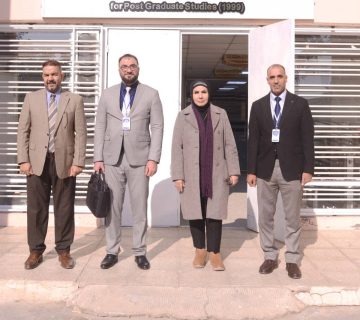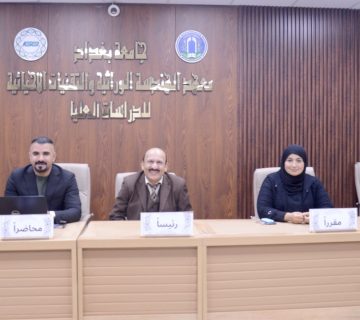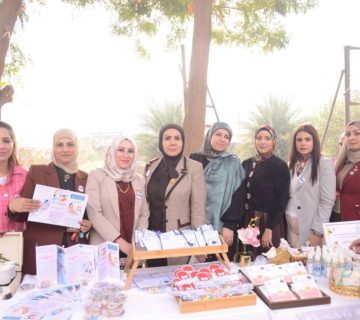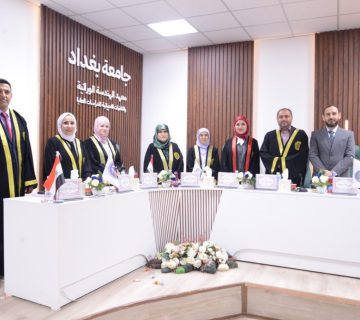The Institute of Genetic Engineering and Biotechnology for Postgraduate Studies/University of Baghdad discussed the dissertation of the doctoral student, “Fadha Abdullah Mahmoud,” entitled: “The relationship of the genotypes of leptin genes, the leptin receptor, and some parameters studied in blood serum to polycystic ovarian syndrome in a sample of Iraqi women” on the discussion hall. At the Institute.
The study aimed to find the relationship between the genotypes of leptin and leptin receptor genes and some parameters studied in blood serum with polycystic ovary syndrome in a sample of Iraqi women.
During the study, the genetic study of leptin genes was determined at 7799039rs and the leptin receptor at 1137100rs and 1137101rs by high-resolution polymerase chain reaction fusion. The average body mass index was significantly higher (P≤0.01) in polycystic ovary syndrome patients (30.21±0.70) when compared with the group control (24.28±0.617). The results of body mass index classification for patients with polycystic ovary syndrome indicated that 53.34% of them suffer from obesity and 26.67% suffer from overweight that does not reach the stage of obesity, while the lowest percentage is 18, 34% were of normal weight and finally 1.67% were thin.
The results of the study showed that the concentrations of the hormone leptin were significantly higher in the affected women compared to the control group (4303.29±71.01 compared to 3854.84±213.97 nanograms/ml, respectively). Also, the concentrations of the hormone leptin receptor were significantly higher in the patients compared to the control group (144.097±5.51 versus 122.166±7.65 picoram/ml, respectively).
The study recommended that the levels of anti-Müllerian hormone (AMH) in blood serum were significantly (p˂0.05) lower in the GG genotype compared to the AA and AG genotypes (3.52 ± 1.03 compared to 6.73 ± 0.44 and 6). 69±1.42, respectively).
While the levels of triglycerides in blood serum were significantly (p˂0.05) higher in the GG genotype compared to the AA and AG genotypes at the variation of 1137101rs for the leptin receptor gene (128.21±15.10 versus 77.64±13.65 and 77). 14±15.16 mEq/dL, respectively). The GAA haplotype represents a protective factor against the development of polycystic ovary syndrome. Likewise, the combined haplotype GAA/GAA GAA/AAA represents a protective factor, while both the combined haplotypes GAA/AGG and GAA/AGA represent risk factors. For the pathology of polycystic ovary syndrome, it was concluded from the current study that polycystic ovary syndrome is related and positively associated with high body mass index values. Also, the genetic variations studied for the leptin and leptin receptor genes have a role in the pathology of polycystic ovary syndrome.

Comments are disabled.










